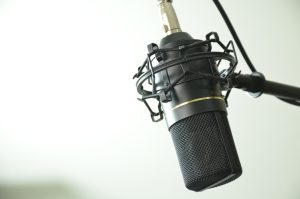Using video for improvisation exercises on artistic expression and conveying emotions
A group or individual activity, where students work with expression and mood through improvisation exercises alongside regular teaching over the course of a semester. Both the teacher and the students participate in the same exercises using video to record the exercises. The videos are shared with the teacher and the other students. After each exercise, e.g. once a week, the teacher meets with the students in person to discuss their approaches to the exercises and their ways of expressing the music.
Navigate the different aspects of the activity here

The purpose of the activity
- To broaden the students’ musical and artistic independence and introduce them to new approaches in their practice
- To create a motivating and supportive community with a positive atmosphere
- To allow students to experience a situation that is not focused on correcting mistakes or shortcomings.
- To encourage the teacher to engage more as an equal participant, performing the same exercises and engaging in a dialogue about artistic practice
Target audience
Music students and conservatory students

Technology/setup
- Video camera/microphone or a mobile device/tablet for recording
- A platform for sharing videos that also allows for asynchronous online discussion, such as the institution’s Learning Management System (LMS) (e.g., Moodle, Speedadmin), email, a closed Facebook group, or a shared drive
Requirements
Teacher
- A willingness to share personal artistic practice and participate in the activity in a different role than usual
- Curiosity and a playful approach
- Interest in helping students express themselves personally
- Ability to adjust the exercises based on the students’ skill levels
Student
- A willingness and desire to explore their own artistic expression
- Openness to engaging with their teacher in a different role
Before, during and after the activity
BEFORE
The teacher
- Provides students with a thorough explanation of the activity’s purpose, process, and goals
- Prepares students to invite others into their artistic process
- Makes a plan and frames the activity
- Agrees on deadlines for sharing videos and dates for in-person meetings
- Formulates and plans exercises, potentially specifying minimum and maximum time for each exercise to avoid excessive repetitions, which may not be constructive for the learning process
- Sets up the digital space for sharing videos and comments
DURING
The teacher
- Completes the same exercise as the students
- Creates a video recording of the exercise, shared with the students by the agreed-upon deadline
- Reviews the students’ recordings, either before or during the in-person session with the students
- Participates in the discussion with students, sharing personal artistic practices
The students
- Complete the exercises
- Record a video of each exercise and share it with other students and the teacher by the deadline
- Watch the recordings made by the teacher and other students, either before the class or during the session
- Participate in discussions with the other students and the teacher, sharing their own artistic practices
Sample exercise instructions:
- Record about 1 minute of video inspired by the word: “A rainy day”
- There’s no right or wrong way—plan it in advance, improvise, or make notes. Keep trying until you’re satisfied with the result
- Make a recording and share it with the other students and the teacher by the deadline
- Create four recordings expressing the following emotions/characters: sad, hopeful, distressed/excited, happy
- These recordings should contain only audio, not video
- Choose your register and improvise only using single-voice melodies
- Don’t play mechanically or “just with your fingers”; instead, try to visualize the melody in your mind as you play
- Make four recordings and share them by the deadline
- Improvisation Quiz
- Record at least two and at most four clips, each expressing different emotions/characters of your choice
- Choose your register and play single-voice melodies
- Share the recordings by the deadline
- The group of students and the teacher will guess the emotion conveyed in each piece and submit their guesses online where the videos are posted, prior to the next meeting
- Play a passage from your repertoire (not improvised) in two different ways, each reflecting a different emotion or character
- Select an appropriate passage from your repertoire
- Record two versions, one for each chosen mood/character, and be prepared to share them at the next meeting
- At the meeting, the students and the teacher will guess which emotions/characters are being expressed
AFTER
The teacher
- Participate in a joint evaluation with the students to discuss the outcome, progress, and adherence to deadlines
The students
- Participate in a joint evaluation with the teacher and the other students to discuss the outcome, progress, and adherence to deadlines

Experiences with the activity
Four students from the Royal Academy of Music Aarhus/Aalborg participated in a semester-long series of improvisation exercises. They shared that recording the improvisations was a positive experience. They found that combining improvisation with video helped support reflection, as watching the video and verbalizing what was happening made the process feel more tangible. One student remarked, “it made it more real. It defined it more in my mind”.
Some students also noticed improved listening skills during improvisation. One stated, “I listen better while improvising”, while another added that “improvisation strengthens one’s listening”. Several students felt that talking or writing briefly about a video made them more aware of how to convey specific emotions. As one student asked, “does anger always have to be expressed in a certain way?” However, some students found it difficult to share their videos or felt they gained less from the activity.
All students emphasized the importance of following up the exercises with an in-person meeting to discuss them. They felt the group meetings were highly effective. One student noted, “the group was good. It was nice to share and fun to listen to others’ improvisations”, while another added, “it’s always good to see others—even if you don’t agree. Hearing others’ perspectives makes me think”.
The teacher observed that the activity demonstrated “a shared language for expressing emotions in music” among the students. He felt that his participation in the same exercises made a difference, explaining, “there’s a real shift [in sharing videos] when I upload my own—it changes the commitment level”. The teacher also appreciated the unique way of engaging with the students, saying it was “…not as teacher directed. It felt more relaxed—we laughed more,” and adding that “it was informal in a way I rarely experience”.

As a teacher of brass instruments, Ida Hovde has developed and tested using video for students to practice their own part along with others’ recordings. Listen to Ida explain the process, experiences, and reflections after the activity: